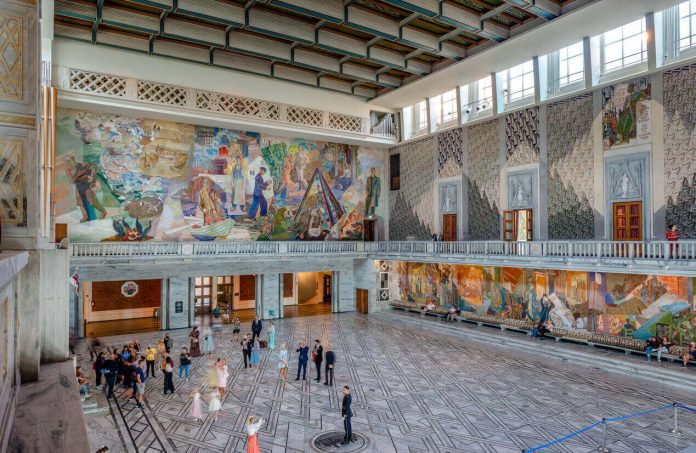Art has been a source of human fascination and inspiration for centuries. Museums house some of the world’s most valuable and culturally significant masterpieces. Protecting these priceless works of art from theft and vandalism is a top priority for museums around the globe.
In this blog post, we will delve into the fascinating world of art protection and explore the comprehensive measures museums employ to safeguard their treasures.
The Value of Art
Before we dive into the specifics of art protection, it’s essential to understand the immense value of museum artworks. Paintings, sculptures, and other artifacts often represent a significant monetary value and cultural and historical importance. The loss or theft of such pieces can be devastating for the art world and society.
Surveillance Systems
Museums invest heavily in advanced surveillance systems to monitor their galleries and protect their art. These systems include high-resolution security cameras strategically placed throughout the premises.
These cameras deter potential thieves and provide a detailed and continuous record of any suspicious activity. These recordings can be invaluable for law enforcement agencies in the event of a theft.
Moreover, museums employ sophisticated software that can detect unusual movements or patterns, automatically alerting security personnel to potential threats. These systems allow for real-time monitoring and a swift response to any security breach.
Security Personnel
In addition to surveillance systems, museums employ a dedicated team of security personnel to patrol the premises. These professionals are trained to detect and respond to any suspicious behavior. Their presence alone can discourage potential thieves from attempting to steal artworks. Well-trained security staff play a critical role in art protection.
Security personnel also undergo specialized training to handle various emergency situations, including theft, vandalism, or even natural disasters. They are equipped to react quickly and effectively to minimize damage and loss in case of an incident.
Access Control
Museums implement strict access control measures to minimize the risk of theft. Restricted areas, such as vaults and storage rooms, are typically equipped with advanced access control systems that require authorized personnel to use keycards or biometric authentication to enter. This ensures that only trusted individuals can access valuable artworks.
Furthermore, access control systems can be integrated with surveillance technology, providing a comprehensive overview of who enters and exits restricted areas, making it easier to identify any unauthorized access or suspicious activity.
Art Protection Technology
Technology continues to play a significant role in enhancing art protection measures. Some museums have adopted innovative solutions like smart sensors and microchips embedded in artworks. These devices can alert security personnel if an artwork is moved or tampered with, providing an extra layer of security.
Additionally, museums often employ state-of-the-art alarm systems directly connected to local law enforcement agencies. In a security breach, authorities can respond swiftly, increasing the likelihood of recovering stolen art.
Environmental Control
Preserving the condition of artworks is another essential aspect of art protection. Museums carefully control temperature, humidity, and lighting to prevent damage to their collections. Improper environmental conditions can lead to the deterioration of artworks over time, making them more susceptible to theft or damage.
Advanced environmental control systems are equipped with sensors and alarms that notify museum staff of any deviations from the desired conditions. This proactive approach allows for immediate corrective action to be taken, protecting the artworks from harm.
International Cooperation
Art theft is not limited to a single country; stolen artworks often cross international borders. To combat this, museums collaborate with law enforcement agencies and organizations dedicated to art recovery. Interpol, for example, maintains a database of stolen art that helps track and recover stolen pieces worldwide.
Museums actively share information about stolen artworks with law enforcement agencies and other institutions, facilitating the identification and recovery of stolen art. This international cooperation is essential in the fight against art theft.
Public Awareness
Museums also rely on public awareness to aid in art protection. They often display information about stolen artworks or organize exhibitions that raise awareness about art theft. This can help the public identify stolen pieces and report any relevant information to authorities.
By engaging the public in the protection of art, museums create a network of vigilant individuals who can play a crucial role in recovering stolen artworks and deterring potential thieves.
Art Transport
The security of artworks doesn’t end at the museum’s entrance. Museums employ specialized art handlers and use secure, climate-controlled containers when transporting art. These precautions ensure the artworks remain safe during transit to other locations, such as exhibitions or restoration facilities.
Art handlers are trained to handle artworks with the utmost care, ensuring they are protected from physical damage during transportation. Secure containers have advanced locking mechanisms and environmental controls, further safeguarding the artworks throughout their journey.
Conclusion
Art protection is a complex and vital aspect of preserving our cultural heritage. Museums employ sophisticated measures, from advanced surveillance systems to strict access controls, to safeguard their invaluable collections.
While the world of art protection is continually evolving, one thing remains clear: museums are committed to ensuring that future generations can continue to appreciate and learn from the masterpieces that grace their galleries.
In the ever-evolving battle against art theft, museums play a crucial role in both protecting their treasures and educating the public about the importance of art preservation. Art protection is not just about safeguarding valuable objects; it’s about preserving our shared history and culture for generations.
Through cutting-edge technology, highly trained personnel, international cooperation, and public awareness, museums remain guardians of our artistic heritage, ensuring that these treasures remain safe and accessible to all.

































